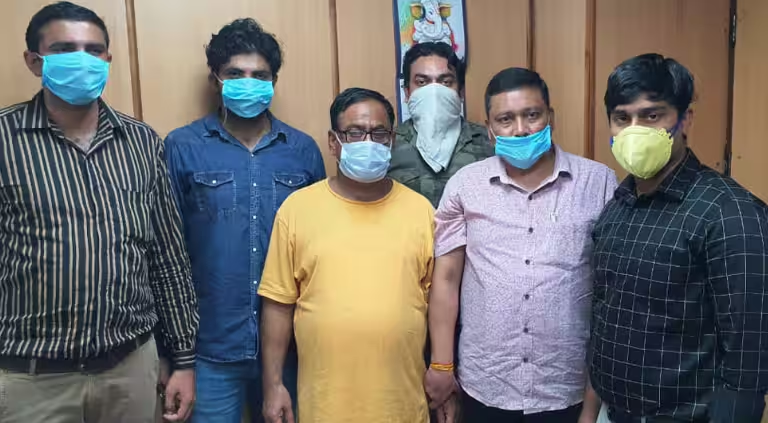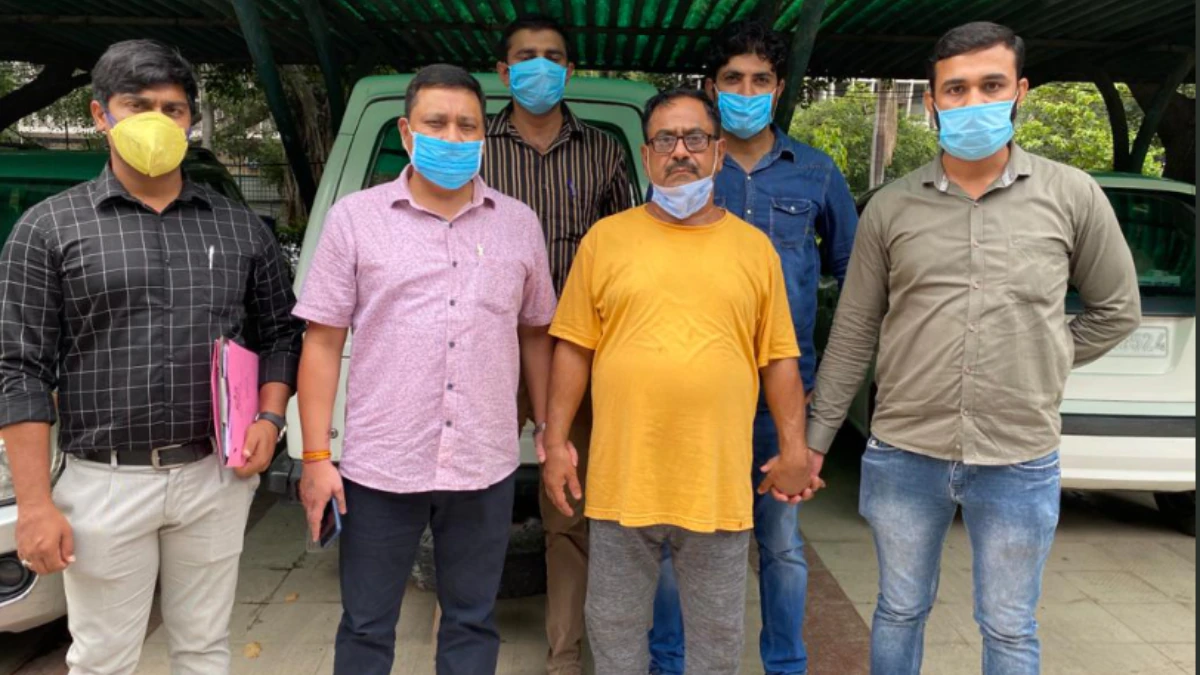
The name Devendra Sharma might sound unassuming, but his dark past reveals a chilling tale of crime and betrayal. Once a trusted Ayurvedic practitioner, Sharma’s life took a sinister turn, making him one of India’s most notorious serial killers and organ traffickers. The story of his transformation from a healer to a murderer has left people shocked and horrified.
A Promising Start in Medicine
Devendra Sharma was born in Rajasthan, India, in a modest family. From a young age, he exhibited intelligence and a keen interest in medicine, particularly in traditional Ayurvedic practices. Encouraged by his family and community, he pursued formal education in Ayurveda, eventually earning a degree in the field. His dedication to his craft and his compassionate approach to treating patients earned him respect in his hometown of Dausa.
Sharma’s clinic, which he established in the early 1990s, became a popular destination for those seeking alternative medical treatments. He was known for his ability to cure ailments that modern medicine often failed to address. Patients came from far and wide, placing their trust in his knowledge and skill. However, beneath this veneer of success and respectability, Sharma’s life was fraught with personal and financial struggles.
Financial pressures began to mount as Sharma ventured into business endeavors outside of his medical practice. He invested heavily in a gas agency and a spare parts business, hoping to secure a better future for his family. Unfortunately, these ventures turned out to be disastrous. His investments failed, leaving him burdened with significant debts. This marked the beginning of his descent into a world of crime.
The Start of a Dark Journey
By the late 1990s, Sharma’s financial woes had pushed him to the brink of desperation. Unable to find a legitimate way out of his predicament, he began dabbling in illegal activities. What started as minor fraud soon escalated into a full-blown criminal enterprise. Sharma’s entry into the world of organ trafficking was both opportunistic and calculated.
Organ trafficking, a dark underbelly of the medical world, offered Sharma a way to make quick money. He exploited the desperation of patients in need of kidney transplants and the poverty of individuals willing to sell their organs. Sharma established connections with unscrupulous middlemen who facilitated the illegal trade. Together, they preyed on vulnerable individuals, coercing them into parting with their kidneys under false pretenses or minimal compensation.
Over time, Sharma’s illegal clinic became a hub for organ trafficking. He and his team performed more than 125 kidney transplants, targeting victims who were often unaware of what was happening until it was too late. The recipients, wealthy clients willing to pay exorbitant sums for life-saving surgeries, rarely questioned the origins of the organs they received. Sharma’s operation thrived in this ethical and legal gray area.
Crossing the Line: Murders Begin
As Sharma’s criminal enterprise grew, so did his audacity. To protect his operations and eliminate potential threats, he began committing murders. His victims were primarily taxi drivers, chosen for their relative anonymity and the ease with which their disappearances could go unnoticed. Sharma would lure these drivers with promises of high-paying fares, only to kill them and steal their vehicles.
Sharma’s modus operandi was chillingly methodical. After killing his victims, he and his accomplices disposed of the bodies in remote areas, often dumping them in canals or burning them to destroy evidence. The stolen vehicles were then sold in different states, providing an additional source of income. This dual strategy of organ trafficking and vehicle theft allowed Sharma to amass significant wealth while staying under the radar of law enforcement.
The Modus Operandi
Sharma’s methods were both calculated and brutal. His operations were meticulously planned, leaving little room for error. He relied on a network of accomplices who played crucial roles in identifying victims, performing surgeries, and covering up crimes. The operation’s success depended on maintaining a facade of legitimacy, which Sharma managed with remarkable skill.
One of the most disturbing aspects of Sharma’s crimes was his lack of remorse. He treated his victims as mere means to an end, showing no empathy for their suffering. This cold and calculating demeanor earned him the nickname “Doctor Death,” a moniker that underscored the horrifying nature of his actions.
A Network of Crime
Over the years, Sharma’s criminal network expanded, spanning multiple states, including Delhi, Uttar Pradesh, and Rajasthan. He formed alliances with other organ traffickers and criminals, creating a web of illegal activities that was difficult to dismantle. The scale and sophistication of his operations baffled investigators, who initially struggled to piece together the extent of his crimes.
Sharma’s activities highlighted significant vulnerabilities in India’s medical and legal systems. The lack of stringent regulations on organ transplants and poor record-keeping allowed him to exploit loopholes. His ability to operate undetected for years exposed systemic failures that need urgent attention.
The Arrest That Shocked the Nation

In 2004, Sharma’s reign of terror finally came to an end. Acting on a tip-off, the police apprehended him in Delhi. His arrest marked a turning point in the investigation, as it led to shocking revelations about his criminal empire. During interrogation, Sharma confessed to his crimes, including his involvement in organ trafficking and multiple murders.
The details of his confessions were nothing short of horrifying. Sharma admitted to killing over 50 people and orchestrating numerous illegal kidney transplants. His calm demeanor during questioning added to the public’s outrage, as it seemed to underscore his complete lack of remorse.
Trial and Conviction
The legal proceedings against Sharma were lengthy and complex. Given the magnitude of his crimes, gathering evidence and testimonies was a daunting task for prosecutors. However, the weight of the evidence against him was overwhelming. Witnesses came forward, and forensic evidence linked Sharma to multiple crimes, sealing his fate.
In 2008, Devendra Sharma was convicted of multiple charges, including murder and organ trafficking. He was sentenced to life imprisonment, bringing a semblance of justice to the victims and their families. However, the scars left by his actions remain deep.
A Cautionary Tale
The case of Devendra Sharma serves as a grim reminder of how greed and desperation can lead to unimaginable crimes. It also underscores the need for better regulation in the healthcare sector. The illegal organ trade continues to thrive in many parts of the world, fueled by poverty, inequality, and the demand for transplants.
Sharma’s story is not just about a man who turned into a monster; it is also about the societal issues that enabled his crimes. From the lack of awareness about organ donation to the loopholes in the law, several factors contributed to the rise of “Doctor Death.”
Lessons for Society
While Sharma’s conviction brought some closure, it also raised important questions about the state of law enforcement and healthcare in India. How did a single man manage to commit such heinous crimes for years without detection? Why were the victims’ families unable to seek justice earlier? These questions demand introspection and action.
The case has prompted authorities to tighten regulations around organ transplants and increase surveillance of illegal clinics. However, much more needs to be done to prevent similar crimes in the future. Public awareness campaigns and stricter enforcement of laws are crucial steps in this direction.
The Human Cost of Crime
At the heart of Sharma’s story lies the suffering of his victims and their families. The taxi drivers who fell prey to his schemes were often the sole breadwinners of their families. Their deaths left behind widows, orphans, and parents struggling to survive. For those whose kidneys were forcibly removed, the physical and emotional trauma remains a lifelong burden.
The human cost of Sharma’s crimes is immeasurable. While the financial profits he reaped were substantial, they came at the expense of countless lives. His actions have left a lasting impact on the victims’ families, who continue to grapple with their loss.
The Psychological Aspect
Understanding Sharma’s psyche provides insight into the making of a criminal. Experts have speculated that Sharma’s transformation from a healer to a killer was driven by a combination of financial desperation, greed, and a lack of empathy. His ability to compartmentalize his actions, treating murder and organ trafficking as mere business transactions, points to a deeply disturbed mindset.
Sharma’s story also raises questions about the societal pressures that can push individuals toward crime. The stigma associated with financial failure and the lack of support systems for those in debt create conditions where desperate individuals may resort to extreme measures.
A Legacy of Horror
Devendra Sharma’s name will forever be associated with betrayal, greed, and cruelty. His story serves as a warning about the dangers of unchecked ambition and the dark side of human nature. For those who knew him as a doctor, his transformation into a killer remains a shocking betrayal of trust.
As society moves forward, the lessons from Sharma’s case must not be forgotten. Strengthening the healthcare system, ensuring accountability, and fostering empathy can help prevent such tragedies in the future. The tale of “Doctor Death” is a somber reminder of the work that remains to be done to create a safer and more just society.

